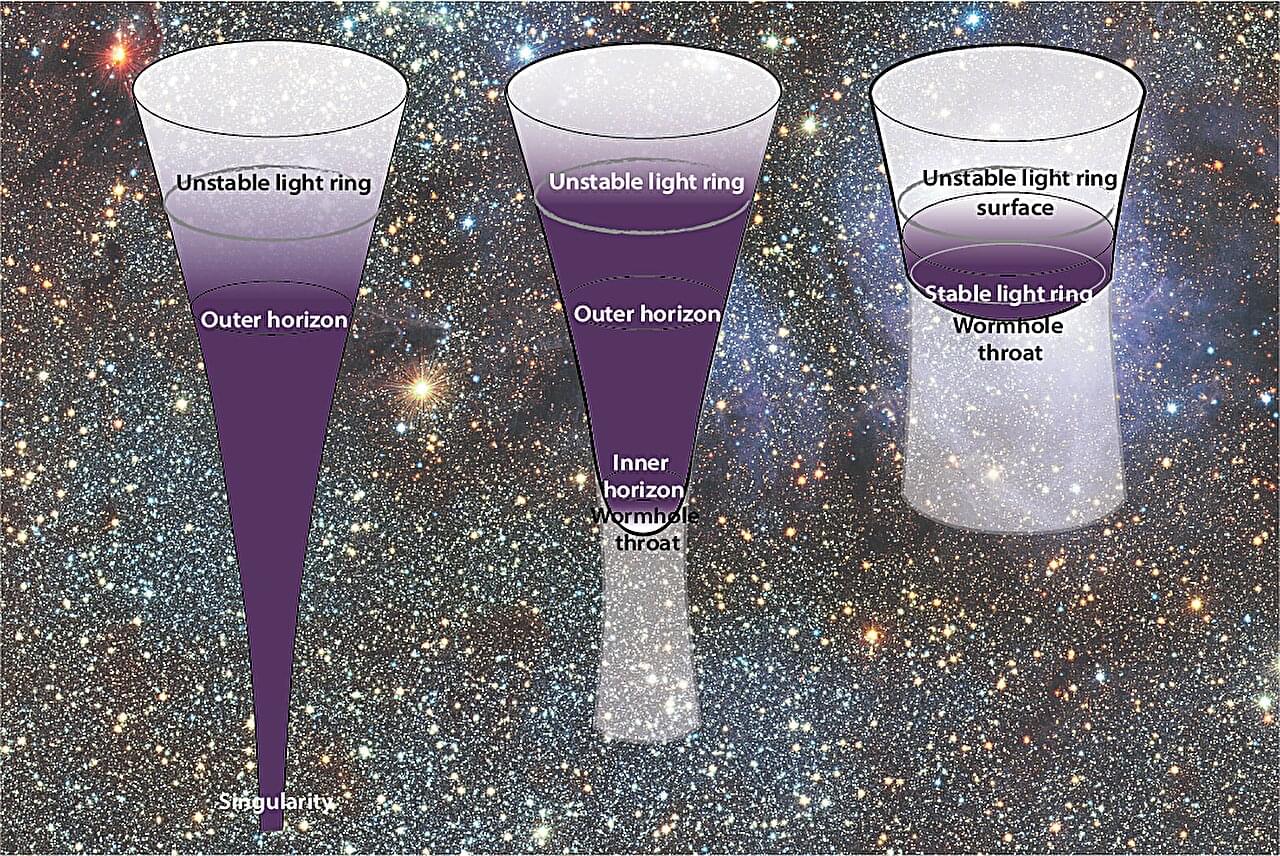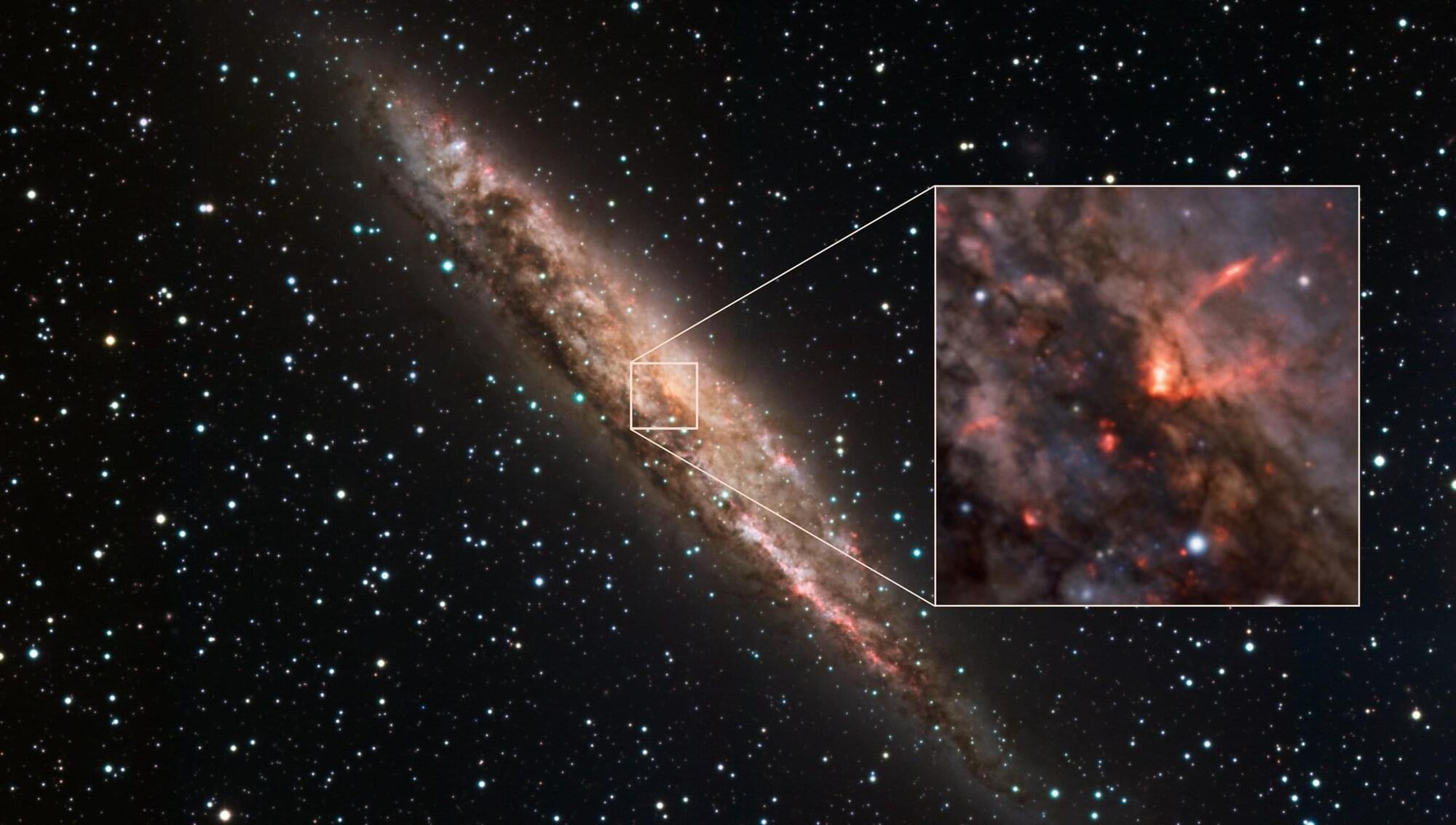The concept of nothing once sparked a 1000-year-long war, today it might explain dark energy and nothingness even has the potential to destroy the universe, explains physicist Antonio Padilla


The concept of nothing once sparked a 1000-year-long war, today it might explain dark energy and nothingness even has the potential to destroy the universe, explains physicist Antonio Padilla

The blazar BL Lacertae, a supermassive black hole surrounded by a bright disk and jets oriented toward Earth, provided scientists with a unique opportunity to answer a longstanding question: How are X-rays generated in extreme environments like this?
NASA’s IXPE (Imaging X-ray Polarimetry Explorer) collaborated with radio and optical telescopes to find answers. The results, available on the arXiv preprint server and set to be published in the journal Astrophysical Journal Letters, show that interactions between fast-moving electrons and particles of light, called photons, must lead to this X-ray emission.
Scientists had two competing possible explanations for the X-rays, one involving protons and one involving electrons. Each of these mechanisms would have a different signature in the polarization of X-ray light. Polarization is a property of light that describes the average direction of the electromagnetic waves that make up light.
What is time? Speaking time travel, black holes and the remits of science. In this podcast conversation, we speak with Professor David Wilkinson — physicist and author of popular science books on Stephen Hawking to explore the question: can we ever fully understand time through science, or does it open up more mystery?
Owl in space at https://owlinspace.com

How do you distinguish a galaxy from a mere cluster of stars? That’s easy, right? A galaxy is a large collection of millions or billion of stars, while a star cluster only has a thousand or so. Well, that kind of thinking won’t get you a Ph.D. in astronomy! Seriously, though, the line between galaxy and star cluster isn’t always clear. Case in point, UMa3/U1.
It’s easy to distinguish galaxies such as Andromeda and the Milky Way. They are large, gravitationally bound, and dominated by dark matter. It’s also easy to distinguish star clusters such as the Pleiades. They are loosely bound star groupings without dark matter. But for a type of small dwarf galaxy known as Ultra-Faint Dwarfs (UFDs) the dividing line gets fuzzy.
UFDs are dominated by dark matter. The mass of the Milky Way, for example, is about 85% dark matter. An ultrafaint dwarf galaxy, however, can have a thousand times more dark matter than luminous matter. This is why they are so faint. Since UFDs often contain some of the oldest stars in the Universe, astronomers love to study them for clues on the origins of galaxies. Which brings us to UMa3/U1.

Ever since general relativity pointed to the existence of black holes, the scientific community has been wary of one peculiar feature: the singularity at the center—a point, hidden behind the event horizon, where the laws of physics that govern the rest of the universe appear to break down completely. For some time now, researchers have been working on alternative models that are free of singularities.
A new paper published in the Journal of Cosmology and Astroparticle Physics, the outcome of work carried out at the Institute for Fundamental Physics of the Universe (IFPU) in Trieste, reviews the state of the art in this area. It describes two alternative models, proposes observational tests, and explores how this line of research could also contribute to the development of a theory of quantum gravity.
“Hic sunt leones,” remarks Stefano Liberati, one of the authors of the paper and director of IFPU. The phrase refers to the hypothetical singularity predicted at the center of standard black holes —those described by solutions to Einstein’s field equations. To understand what this means, a brief historical recap is helpful.

Interstellar travel, warp drive, faster than light travel, warp bubble, Alcubierre drive, NASA warp drive, space-time distortion, light speed travel, how warp drives work, real warp technology, warp propulsion system, warp drive explained, warp bubble discovery, warp engine future, future of space travel, next-gen propulsion, quantum space travel, NASA future engines, faster than light propulsion, warp speed engine, interstellar propulsion, warp field theory, realistic warp drive, time-space bending, warp drive research, space compression engine, warp bubble formation, speed of light engine, space travel breakthrough, quantum warp physics, NASA Alcubierre experiments, faster than light spacecraft, space engine of the future, science behind warp travel, future space engines, advanced propulsion systems, faster space travel, interstellar engine, AI warp technology, warp speed concept, deep space propulsion, warp travel possibility, future of interstellar travel, warp field generator, warp drive simulation, space-time technology, warp engine design, warp travel physics, NASA advanced propulsion, light speed technology, interstellar drive, futuristic space missions, quantum warp theory, interstellar exploration, Alcubierre theory explained, faster than light speed real, warp drive new update, is warp drive real, warp energy system, interstellar ship design, future starship propulsion, warp travel 2025, theoretical warp engine, quantum warp bubble, warp travel breakthroughs, warp vs hyperspace, faster than light reality, space-time folding, next-level propulsion tech, how warp bubbles work, warp field strength, warp engine NASA, intergalactic travel system, warp propulsion lab, faster than light theories, dark energy space travel, warp drive potential, NASA warp tests, AI in warp design, building warp field, interstellar future tech, light speed drive, quantum drive system, warp field breakthrough, realistic warp bubble, future propulsion technologies, warp physics 2025, space exploration engine, space future transport, human warp travel, light barrier propulsion, warp core explained, breakthrough warp news, futuristic space travel engine, hyperspace physics, gravity drive future, starship warp engine, warp field propulsion, advanced space engine, warp travel truth, real warp space engine, warp research 2025, NASA space warp news, interstellar velocity tech, how close is warp drive, warp travel secrets, build warp bubble, real future propulsion, interstellar propulsion systems, future warp experiments, antimatter warp engine, NASA interstellar roadmap, theoretical space travel, faster than light breakthrough, bending space travel, advanced NASA propulsion, deep space warp tech, warp field dynamics, interstellar navigation, space-time engineering, propulsion beyond light, warp field lab research, zero point propulsion, exotic matter warp tech, Einstein Rosen bridge travel, deep space warp bubble, warp travel possibilities, Alcubierre drive latest, cosmic warp fields, futuristic warp designs, NASA warp concepts, artificial gravity propulsion, light years in seconds, science fiction becomes real, warp engine materials, future spaceflight systems, tech behind warp travel, intergalactic warp missions, real science warp drive, breaking physics boundaries, warp acceleration tech, future speed engines, beyond light barrier, revolutionary space drives, interstellar warp fleet, building real starships, quantum flux drive, ultra fast space travel, high-speed interstellar ships, space warping devices, sci-fi into science, real warp research 2025, future warp mechanics, warp tech for Mars, light years shrink tech, high-energy warp field, space compression reality, theoretical warp fields, warp technology update, real warp engine 2025, quantum space travel, future space exploration, interstellar drive systems, warping fabric of space, cutting-edge warp research, real-world warp theories, next-gen space engines, warp drive explained simply, warp travel breakthrough, sci-fi warp facts, realistic space propulsion, next century spaceflight, space bending concepts, time space compression, warp navigation systems, warp thrust technology, energy-efficient space travel, practical warp physics, warp prototype testing, NASA warp updates, space engine revolution, warp spacecraft design, future propulsion mission, warp speed potential, traveling galaxies fast, warp system mechanics, interstellar jump theory, speed of light bypass, warp vs light engines, fusion warp engine, space warping principles, warp timeline predictions, interstellar tech 2040, breakthrough propulsion systems, warp vs wormhole travel, practical warp propulsion, warp travel tech 2025, cosmic warp navigation, interstellar physics model, galactic travel innovation, propulsion science advance, real-life star trek drive, warp experimentation lab, next era space travel, warp engine components, future of warp research, dark energy propulsion, interstellar transport future.
In 2024 a shockwave rippled through the astronomical world, shaking it to the core. The disturbance didn’t come from some astral disaster at the solar system’s doorstep, however. Rather it arrived via the careful analysis of many far-distant galaxies, which revealed new details of the universe’s evolution across eons of cosmic history. Against most experts’ expectations, the result suggested that dark energy —the mysterious force driving the universe’s accelerating expansion—was not an unwavering constant but rather a more fickle beast that was weakening over time.
The shocking claim’s source was the Dark Energy Spectroscopic Instrument (DESI), run by an international collaboration at Kitt Peak National Observatory in Arizona. And it was so surprising because cosmologists’ best explanations for the universe’s observed large-scale structure have long assumed that dark energy is a simple, steady thing. But as Joshua Frieman, a physicist at the University of Chicago, says: “We tend to stick with the simplest theory that works—until it doesn’t.” Heady with delight and confusion, theorists began scrambling to explain DESI’s findings and resurfaced old, more complex ideas shelved decades ago.
In March 2025 even more evidence accrued in favor of dark energy’s dynamic nature in DESI’s latest data release—this time from a much larger, multimillion-galaxy sample. Dark energy’s implied fading, it seemed, was refusing to fade away.
Researchers have created the first laboratory analog of the ‘black hole bomb’, a theoretical concept developed by physicists in the 1970s.
A colossal structure in the distant Universe is defying our understanding of how the Universe evolved.
In light that has traveled for 6.9 billion years to reach us, astronomers have found a giant, almost perfect ring of galaxies, some 1.3 billion light-years in diameter. It doesn’t match any known structure or formation mechanism.
The Big Ring, as the structure has been named, could mean that we need to amend the standard model of cosmology.